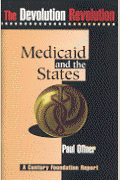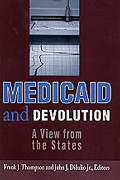Studies in this week’s Hutchins Roundup find that the ratio of household mortgage debt to property values has fallen back to its pre-crisis levels, the overall number of emergency department visits did not increase following Medicaid expansions in 2014, and more.
Household leverage is approaching pre-crisis levels but households might still be vulnerable if house prices plunge
Andreas Fuster and Andrew Haughwout of the New York Fed and Benedict Guttman-Kenney of the U.K. Financial Conduct Authority find that household leverage—the ratio of first mortgage, home equity loans and home equity lines of credit to property value—rose during the housing bust but fell back to near pre-crisis levels as house prices recovered. However, they argue that households remain vulnerable to a severe decline in house prices, with some states that were hit hard by the housing bust being particularly vulnerable.
States that expanded access to Medicaid saw a shift in emergency-room payer mix but no change in the total number of emergency-room visits
Jesse Pines of George Washington University and co-authors find that the increase in the overall number of emergency department visits in states that expanded access to Medicaid in 2014 was not significantly different than in states that did not expand Medicaid. But accepting the Medicaid expansion did shift the mix of payers: emergency-room visits by Medicaid patients increased 27 percent and visits by uninsured and private-insurance patients decreased by 31 percent and 7 percent, respectively.
Traditional macroeconomic analyses might overestimate the costs of high inflation
Challenging the view that a major cost of higher rates of inflation is that prices of various items drift away from their efficient level, Emi Nakamura, Jón Steinsson, and Daniel Villar of Columbia and Patrick Sun of the Federal Communications Commission draw on four decades of detailed data on U.S. consumer prices and find little evidence that price dispersion was higher during the double-digit inflation of the late 70s and early 80s than it is today. These results suggest that central bank worries about setting inflation targets above today’s 2 percent need to be reassessed, the authors say.
Chart of the week: The level of new housing starts continues to recover, albeit slowly

Quote of the week: “Although targeting a low inflation rate generally has been successful at taming inflation in the past, it is not as well-suited for a low [natural interest rate] era,” says the San Francisco Fed’s John Williams
“There is simply not enough room for central banks to cut interest rates in response to an economic downturn when both natural rates and inflation are very low. Two alternatives can be considered together or in isolation to address this issue. First, the most direct attack on low [natural rate of interest] would be for central banks to pursue a somewhat higher inflation target. This would imply a higher average level of interest rates and thereby give monetary policy more room to maneuver… Second, inflation targeting could be replaced by a flexible price-level or nominal GDP targeting framework, where the central bank targets a steadily growing level of prices or nominal GDP, rather than the rate of inflation.”
— John Williams, President, San Francisco Fed
In a Washington Post op-ed, Hutchins Center benefactor Glenn Hutchins argues that U. S. business leaders should support, and be willing to pay for, policies aimed at fostering economic fairness if the business community agenda for economic growth stands any chance.
The Brookings Institution is committed to quality, independence, and impact.
We are supported by a diverse array of funders. In line with our values and policies, each Brookings publication represents the sole views of its author(s).








Commentary
Hutchins Roundup: Household leverage, Medicaid expansions, and more
Thursday, August 18, 2016